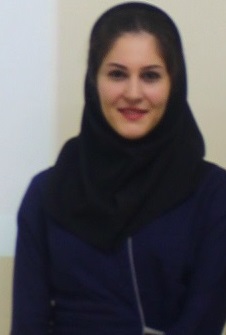Ph. D.
- Title: Flat Smart Structures for Active Sound Radiation Control.
- University: University of Twente, Enschede, The Netherlands.
- Start: June 1, 2015
- Advisor: Dr.Ir. Arthur Berkhoff.
- Home Page
M. Sc. Thesis
- Title: Simlation of Thermal-Electrochemical Governing Equations of Battery Systems.
- Advisor: Dr. Farschad Torabi.
- Graduation Date: September 21, 2014
- Abstract
Batteries are used in many important applications that require portable energy sources. There are many battery technologies among which zinc-silver oxide batteries is under present observation as a result of being rechargeable and having high energy density that makes them one of the best options for the critical and long--term applications thanks to its especial operation characteristics. In these batteries, anticipating the battery temperature is vital due to preventing the battery against turning hot which may results into thermal run-away that is a destructive phenomena. Moreover, temperature rise itself influences the battery behaviour; hence should be predicted correctly. The method used in this thesis in order to estimate the temperature is to solve the conservation of energy equation or the first law of thermodynamics. Therefore, it is necessary to solve the energy equation in a two-dimensional domain on a cell. The energy equation is coupled with the electrochemical equations together with conservation of mass for different species. Therefore, the governing equations are in the form of multiphase, multi--component and are solved in a porous medium. To solve these equations, Computational Fluid Dynamics (CFD) methods should be used. In the present study, finite volume method (FVM) is chosen as the solution method. Finally, in order to validate the obtained results, the simulated data were compared with the results of experimental tests and as a result, the hotter regions of the cell could be identified.
B. Sc. Thesis
- Title: Design of a Green Battery for Tidal Energy in Iran.
- Advisors: Dr. Farschad Torabi.
- Graduation Date: September 5, 2012
- Abstract
The present study initially deals with the necessity of exploiting modern energies-specifically ocean tidal power, and describing the stability of the generated energy as the most significant advantage of this work among other similar tidal power generators. Afterward, physical factors affecting the tidal phenomenon and essential parts of a tidal power generator are addressed. In order to begin the planning, a suitable place is located according to prior investigations; then, by describing the necessity of using a reservoir as a “green battery” dimensions of the tidal power plant are modified, and the type of the main turbine is appointed as well. In order to determine the capacity of a tidal basin; first, the average closure time of the valves is estimated in a one year period using MATLAB data. Next, the type and the number of subordinate turbines applied in the basin valves are determined correspondingly. Also, the type and the number of pumps required for pumping water into the green battery are chosen at the end of designing process. Finally, in the cost analysis section, by introducing a parameter called “payback period”, and considering the electricity price changes, cost efficiency of the present study is evaluated and its feasibility is reported.Faculty of Mechanical Eng. of K. N. Toosi University of Technology
Vanak Square, Molla-Sadra, Pardis
Box 19395-1999
1999143344 TEHRAN
IRAN (ISLAMIC REP.)
Tell: (+98 21) 8867 4841-8 Fax: (+98 21) 8867 7274
Website: www.kntu.ac.ir
Email: mechanic@K
( Notice that to avoid spam mails, "kntu.ac.ir" is replaced with K )

